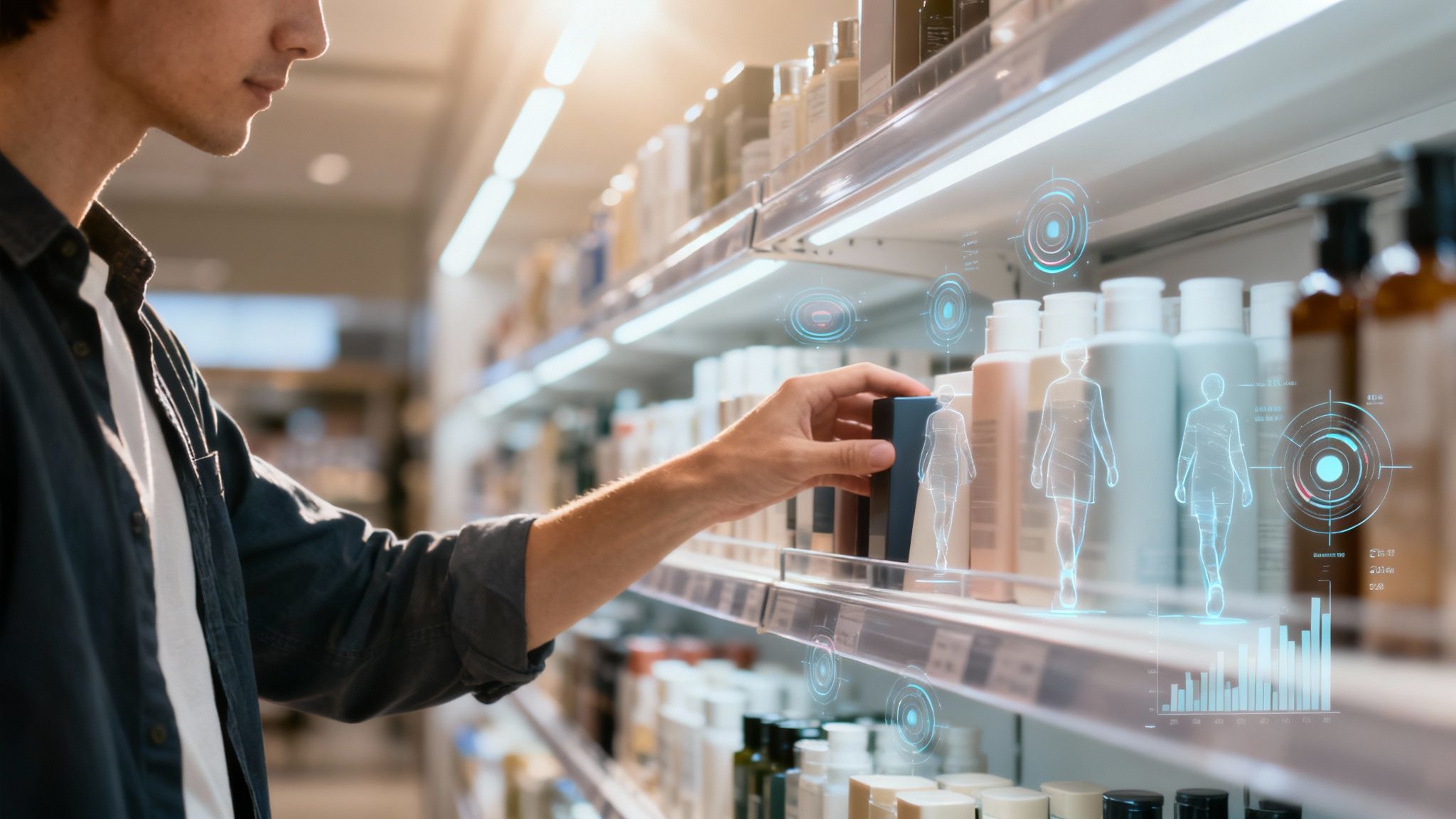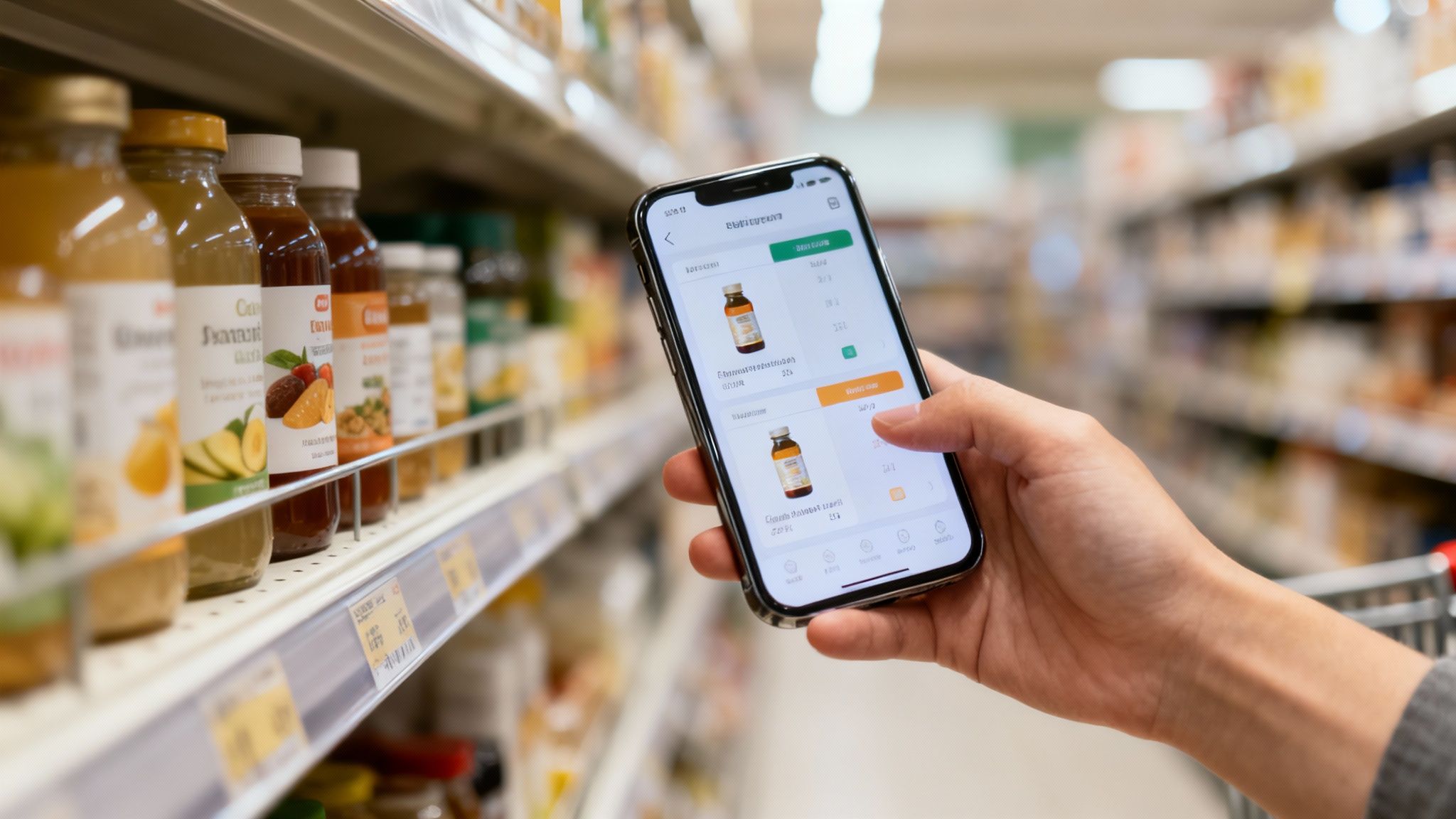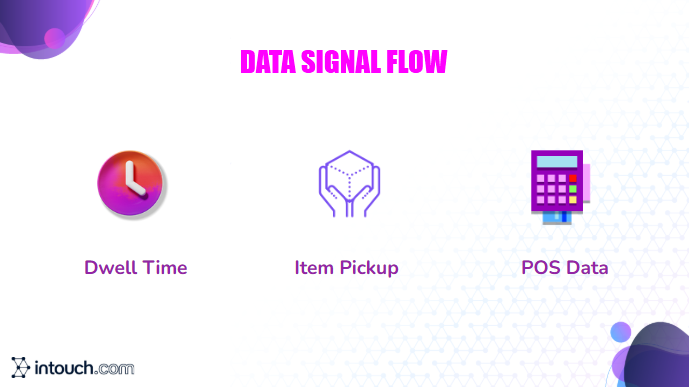

For CPG brands and retailers, the crucial customer interaction occurs within the final three feet between a shopper and the shelf. This is where pre-purchase research meets impulse. A consumer's decision can be swayed by an in-store deal, standout packaging, or a timely digital ad during this brief moment. Known as the consumer decision moment, it is a vital and competitive space in retail, indicating sales success. Success here involves more than having the best product; it requires delivering the right message at the moment of consideration.
The retail landscape has evolved, diminishing CPG brands' ability to track consumers online with the decline of third-party cookies. This change shifts focus to physical stores, rich in first-party data and direct shopper engagement. The in-store setting is now crucial for CPG advertising, offering brands a chance to influence buyers with full purchase intent at the point of sale. Success hinges on effectively shaping purchase decisions at the shelf, driving tangible increases in sales and market share through precise, timely, and relevant strategies.
In a shopper's mind, there is a mix of planned intentions and spontaneous reactions. Shoppers enter with a plan, but the store setup can disrupt it.
Consider the decisions made:
Recognizing various mindsets helps retailers and brands refine strategies. Retailers should foster discovery and simplify choices, while brands need tactics to capture attention.
The key is to bridge the gap between a shopper's original intent and their final action in the aisle. That's where the real magic happens, and it's where companies like Intouch.com are giving brands the tools to measure and act on these moments with incredible precision. The brands that win the consumer decision moment are the ones that show up when it matters most.
The purchasing process is now a complex journey where digital research and in-store experiences intersect. Shoppers skillfully integrate online preparation with physical shopping. The consumer decision moment extends beyond the shelf, influenced by extensive information accessed online.
For retailers and CPG brands, the challenge and opportunity lie in how in-store shopper decisions are influenced by prior online interactions on platforms like Google, Amazon, or TikTok. The shelf is now an interactive experience.

Before entering a store, shoppers often research online, reviewing features, scanning reviews, and comparing prices. This "pre-shopping" phase significantly narrows their options.
Retailers often overlook that the competition for attention starts on search results pages or social media, not in-store. Brands absent in these digital spaces may go unnoticed.
This online research establishes expectations for price, quality, and value. By the time shoppers reach the aisle, they seek to confirm their online findings.
In-store, smartphones serve as essential tools for final purchase decisions, turning aisles into live comparison platforms. According to PwC's June 2023 Global Consumer Insights Pulse Survey, over half of consumers (54%) rely on search engines for pre-purchase information. In stores, 40% use phones to compare products and prices, with 36% checking competitor prices on the spot. You can read the full research about these consumer trends for more detail.
It's more than finding the lowest price; it's about making an informed decision. Shoppers use their phones for:
Identifying key consumer decision moments involves keen observation rather than guesswork. In physical stores, shoppers leave digital clues, which can be deciphered to understand their behavior.
As a store detective, every shopper's action is a clue. A pause in the cereal aisle or a last-minute change at checkout tells a story. With the right technology, you can listen to these stories and respond in real time.
Recognizing decision moments relies on interpreting a shopper’s "digital body language." Key behaviors, once captured as data, indicate hesitation or intent to buy.
Dwell time is a critical indicator. It measures how long a shopper stays in a specific area, with footfall analytics capturing this data. A brief stop suggests passing through, but a pause over 15 seconds indicates active comparison.
Item interaction is another crucial signal. Picking up a product shows genuine purchase consideration. Technologies like smart shelving detect these interactions, highlighting decision moments.
Data from 20,000 stores shows that extended dwell time followed by an item pickup strongly predicts a sale. This is an ideal time for targeted promotions.
Signals extend to checkout. Your POS system provides insights into purchase decisions.
An item void at checkout often indicates price shock. Frequent voids suggest pricing or value concerns. Integrating these signals with inventory data provides insights. If a popular item is out of stock, longer linger times may indicate frustration, presenting an opportunity for competitors and emphasizing the need for strategic advertising.
Economic uncertainty transforms the grocery aisle into a place of careful calculation. When household budgets tighten, impulsive decisions disappear, replaced by value-focused assessments.
A simple purchase becomes a complex decision as shoppers adopt a "make it count" mindset. Every dollar must deliver value, prompting reevaluation of brand loyalties and habits. This shift affects millions of families.
Recent data highlights this shift. The KPMG Consumer Pulse Summer 2025 report shows 39% of households globally have experienced income drops, nearly double from the previous year. This financial strain leads to 25% reducing savings and another 25% using savings to cover expenses, resulting in more selective spending. You can see the full breakdown in their report on consumer behavior trends.
This pressure alters consumer behavior at the shelf in key ways:
This diagram shows how different data signals come together to reveal these moments of intense evaluation in real-time.

Brands and retailers must adapt to meet shoppers' needs for validation and value. Static signs and outdated promotions are ineffective. Instead, dynamic, data-driven strategies are crucial. For instance, if data shows a shopper lingering in the detergent aisle, a digital screen can immediately display a cost-per-load savings promotion. In-store retail media networks play a vital role by delivering targeted messages that address price sensitivity, transforming hesitation into confident purchases.
Recognizing a consumer decision moment is essential, but its true impact lies in responding to it. Guide shoppers by addressing specific barriers, such as price concerns or feature confusion, at the crucial decision moment.
Link your data triggers with in-store actions. When a shopper shows high intent, such as lingering in an aisle, an automated response should engage them. For instance, if someone pauses at the soda aisle for over 20 seconds, display a targeted "Buy One, Get One" offer on a screen nearby. Similarly, a store app could send a coupon to a customer pausing at the premium coffee section, offering timely assistance.
Your messages must be concise and clear to overcome sale barriers:
Even effective strategies can improve. In-store media networks offer opportunities for A/B testing. For instance, test percentage discounts versus BOGO deals to see which boosts sales more. By refining strategies based on data, you can transform every consumer decision moment into a measurable success.
Ready to turn these insights into real, measurable growth? Intouch.com helps you transform your retail space into a dynamic media network that connects with shoppers at the exact moment a decision is made. Our AI-driven platform lets you deliver the right promotion at the right time, measure its impact instantly, and open up powerful new revenue streams.
Discover how Intouch.com can optimize your in-store strategy